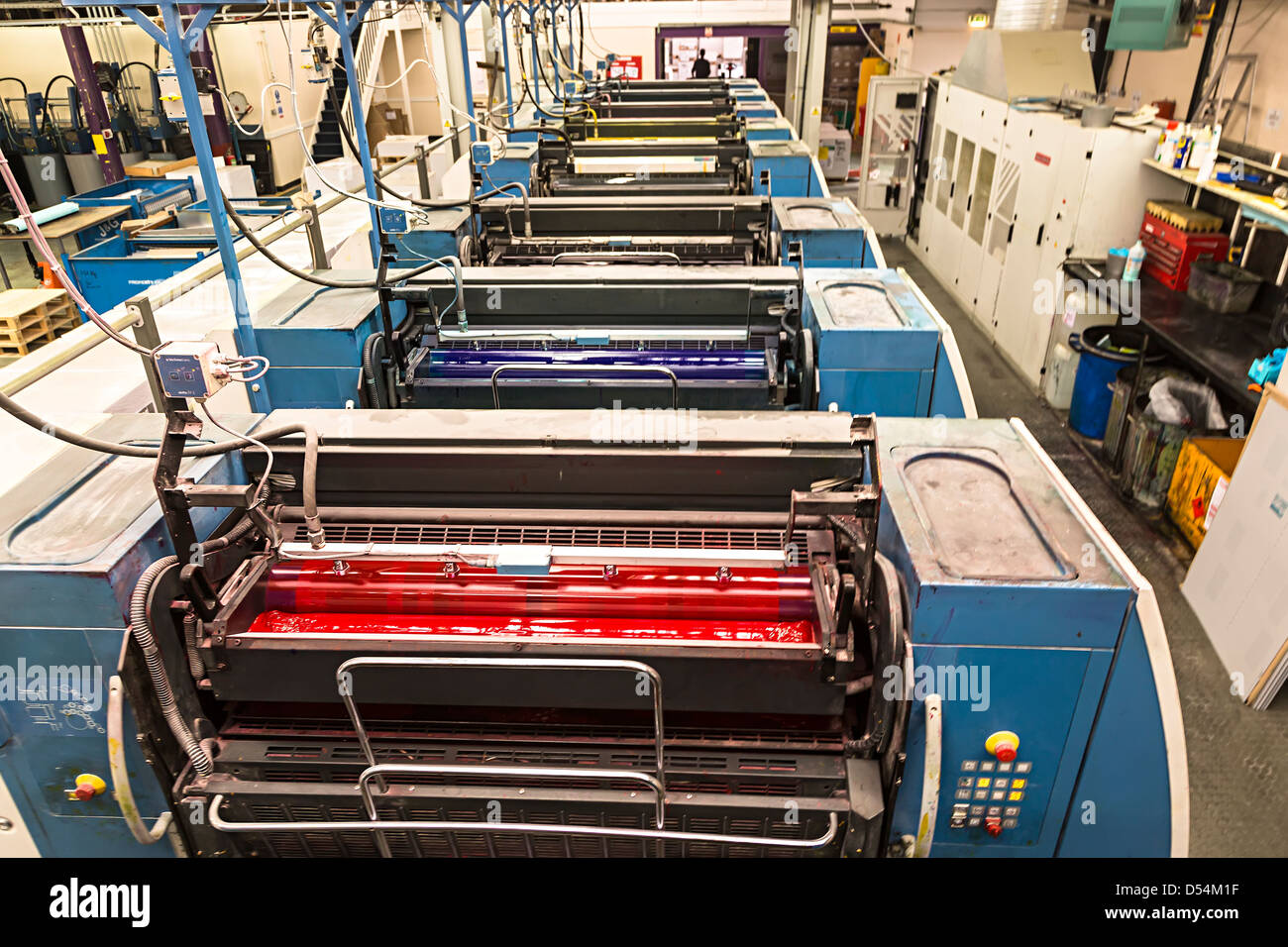litho printing for Catalogs, Flyers, and Brochures
A Comprehensive Overview to Understanding Litho Printing Techniques
The world of litho printing, a strategy originating from the late 18th century, is a remarkable blend of history, art, advancement and science. Stay with us as we trip right into the captivating realm of litho printing.
The Historic Advancement of Litho Printing
The historic trajectory of litho printing, an essential advancement in the realm of communication, is a fascinating tale of human ingenuity. The procedure advanced with the arrival of the rotating press, which greatly increased productivity. Each phase of litho printing's development showcases humankind's relentless pursuit of performance and quality in visual communication.
Translating the Science Behind Litho Printing Inks
Relocating forward in the exploration of litho printing methods, the emphasis now moves to the scientific research behind litho printing inks. The make-up of these inks, their drying out procedure, and color mixing techniques create the backbone of this complex art kind. Comprehending these elements is essential to mastering the craft and accomplishing the preferred print outcomes.
Structure of Litho Inks
In lithographic printing, the essential duty of litho inks can not be overemphasized. The composition of litho inks differs depending on its objective, however generally, they include two major elements - lorries and pigments. Pigments, the color-providing aspects, are carefully ground bits suspended in the lorry, a fluid that lugs the pigment onto the printing surface. The lorry is a complex combination of solvents, oils, and resins, which affect the ink's drying time, bond, and gloss. Additionally, different ingredients are present to improve particular residential or commercial properties like circulation, drying, and resistance to environmental results. Each component plays a critical part in the final print's top quality, making the accurate formula of litho inks an intricate science.
Ink Drying Refine
From the composition of litho inks, attention turns to the remarkable procedure of ink drying. The drying out procedure is important, as it influences the final print's top quality and longevity. Two key techniques are made use of in litho printing: oxidative drying out and absorption. Oxidative drying out entails the ink responding with oxygen airborne to develop a difficult, completely dry movie. This technique gives a long lasting finish, yet can be slower compared to absorption. Absorption, on the other hand, involves the ink permeating right into the paper fibers, which is a much faster procedure however can cause much less lively colors. The option between these methods is dependent upon factors such as print speed needs, the paper kind utilized, and the wanted surface.
Color Combining Methods
While the drying procedure plays a key function in litho printing, the scientific research of color blending strategies holds equal relevance. The science behind litho printing inks likewise takes right into account the transparency of the ink, which impacts just how colors overlay and mix.
The Art and Layout Elements in Litho Printing
Litho printing breathes life into art and design with its unique aspects. The process entails developing a picture on a lithographic sedimentary rock plate or steel plate with a smooth surface. The picture is then printed onto a medium, normally paper, by moving the ink from home plate. What collections litho publishing apart is its capability to reproduce intricate designs with high fidelity, making the outcome virtually identical to the original artwork. This is accomplished via making use of different line strategies such as hatching, stippling, and cross-hatching, which enable a series of tonal results. Litho printing suits a selection of more tips here colors, making it possible for musicians to develop lively and vibrant prints. This mix of accuracy and flexibility makes litho printing a preferred choice for many musicians and developers.
Modern Applications of Litho Printing Techniques
Litho printing strategies have discovered comprehensive usage in the contemporary business field. Its impact and relevance continue to grow with the advent of brand-new advancements and technologies in the field. This area will certainly check out these contemporary applications and the transformative role they play in the printing sector.
Industrial Litho Printing Utilizes
In today's electronic age, one might wonder regarding the importance of conventional printing methods. Litho printing stays a critical component of the commercial field. High-volume printing jobs, such as the manufacturing of publications, newspapers, and product packaging, count on litho printing for its ability to provide premium photo high quality and cost performance. The process, which entails moving an inked image from a plate onto a rubber covering and after that to the printing surface area, offers unrivaled consistency. This makes it optimal for tasks calling for a large print run. check over here Litho printing also provides a wide shade range, above that of digital printing. This makes it the go-to choice for jobs that require lively, high-grade color reproduction.
Innovations in Litho Printing
Pushing the borders of conventional strategies, contemporary innovations have sustained a host of innovations in litho printing. One noticeable growth is digital litho printing, which integrates the merits of digital modern technology with litho's premium outcome. visit the site These technologies highlight the long-lasting significance of litho printing in the modern-day globe.
Discovering the Refine of Litho Printing: Action by Action

Challenges and Solutions in Contemporary Litho Printing

Regardless of the accuracy and practice that litho printing proudly upholds, it is not without its set of modern difficulties. Digital litho printing enables for cost-efficient brief runs and easy customization, addressing the problem of variable data. Therefore, while there are difficulties, the litho printing market is proactively adjusting to fulfill them head-on, ensuring its relevance in the future.
Conclusion
In final thought, litho printing, with its abundant history and clinical complexities, holds a substantial area in the print sector. The future of litho printing pivots on its capability to adjust to these changing demands, affirming its enduring worth in an advancing market.
